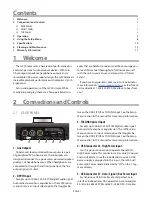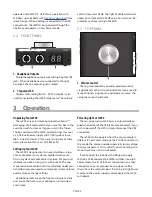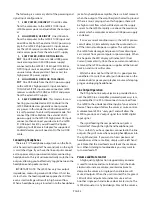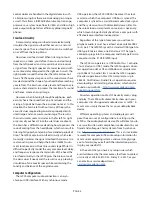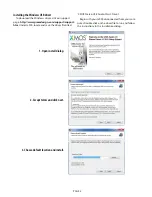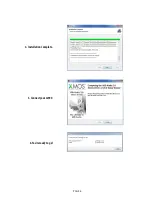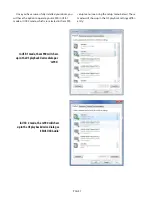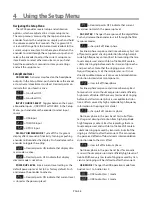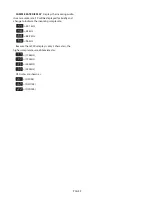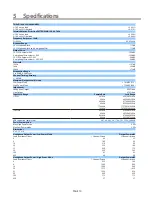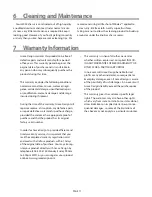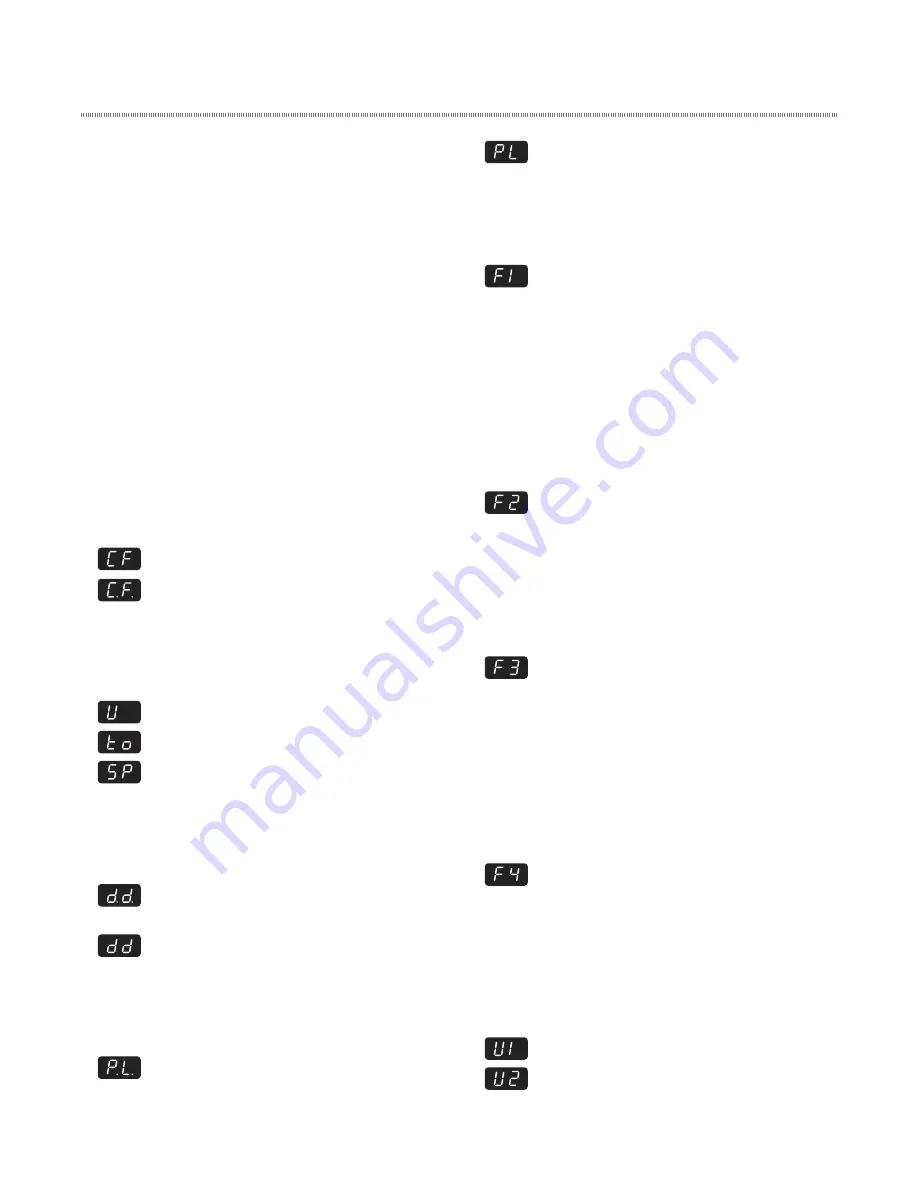
PAGE 8
4 Using the Setup Menu
Navigating the Setup Menu
The m900 provides several setup and calibration
options, which are adjusted in a simple setup menu.
The setup menu is accessed by the top panel volume
encoder. To enter the setup menu, simply push and hold
the volume encoder for 2 seconds. The 7 segment LED
screen will change from the current level readout to the
current setup menu item. From here you either turn the
encoder to scroll through the setup menu, or push and
release the encoder to adjust the current setup menu
item. Rotate to select other menu items, or push and
hold the encoder for 2 seconds to store your settings
and exit the setup menu.
Setup Menu Items
CROSSFEED
Activates crossfeed on the headphone
outputs. In the Setup Menu, push and release the encod-
er to activate / deactivate crossfeed. Decimal points on
indicate that crossfeed is active.
= Crossfeed OFF
= Crossfeed ON
INPUT SOURCE SELECT
Toggles between the 3 avail-
able audio inputs - USB S/PDIF or TOSLINK. In the Setup
Menu, push and release the encoder to select input
source.
= USB input
= TOSLINK input
= S/PDIF input
DISPLAY DIMMER MODE
Turns off the 7 segment
display after 5 seconds of inactivity. Turning or pushing
encoder re-illuminates the display. Push and release the
encoder to toggle the setting.
= Decimal points ON indicate that display dim-
mer mode is active.
= Decimal points OFF indicate that display
dimmer mode is not active.
POWER UP LEVEL
Enters current level setting as the
default power up level. Set to 0 as factory default. Push
and release the encoder to activate.
= Decimal points ON indicate that current level
is stored as the power up level.
= Decimal points OFF indicate that current
level does not match the power up level.
DAC FILTER
Changes the response of the digital filter.
Push and release the encoder to scroll through the filter
response modes:
= sharp roll off, linear phase
For linear phase response and time coherency. Fast roll
off protects against aliasing distortion from high ampli-
tude high frequency content. Best for recordings that are
loud, compressed, and with lots of treble. Will contain
substantial ringing before and after transients(pre-echo
and post-echo). Note that the ringing occurs at the
Nyquist frequency (½ of the sample rate), so it is not
directly audible. However, it can cause intermodulation
distortion in downstream components.
= slow roll off, linear phase
For linear phase response and time coherency. Best
for acoustic music without compression and artificially
high levels of treble. Will have very low levels of ringing
before and after transients but is susceptible to distor-
tion artifacts caused by high amplitude high frequency
information in the program material.
= sharp roll off, minimum phase
Not linear phase in the pass band. Fast roll off pro-
tects against aliasing distortion from high amplitude
high frequency content. Best for recordings that are
loud, compressed, and with lots of treble. Will contain
substantial ringing caused by transients, but all of the
ringing is shifted to after the transient. This can reduce
the perceived effects off downstream intermodulation
distortion due to the Hass Effect.
= slow roll off, minimum phase
Not linear phase in the pass band. Best for acoustic
music without compression and artificially high levels of
treble. Will have very low level of ringing caused by tran-
sients and ringing will be shifted to after the transient.
USB MODE
Changes the USB operation mode from
Audio Class 1 to Audio Class 2
= USB Audio Class 1 mode
= USB Audio Class 2 mode


